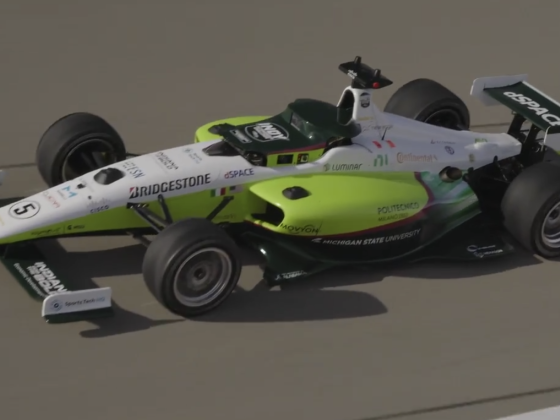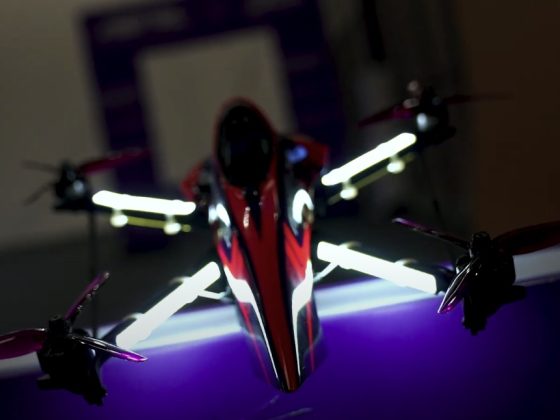We follow sports for human stories — courage, skill, and triumph. A2RL flips that script. Here, machines don’t just assist; they lead, with competition driven by algorithms, engineering, and raw speed. It feels unusual and a bit unsettling — a sport where success depends as much on coding as on racing. And while betting isn’t mainstream yet, odds in the future may be set not on drivers, but on the teams building the smartest, fastest AI.
What Is A2RL?
A2RL—the Abu Dhabi Autonomous Racing League—is an autonomous motorsport league founded by ASPIRE under the UAE’s Advanced Technology Research Council (ATRC). It stages races at the Yas Marina Circuit using EAV-24 AI-powered formula cars, derived from the Japanese Super Formula SF-23 chassis. These vehicles feature onboard sensors, LIDAR, and compute hardware replacing drivers entirely. It’s real grand prix racing, without a human behind the wheel.
A2RL also includes drone and off-road buggy races, but the car race is its flagship, drawing teams from globally renowned universities and innovation hubs.
Season 1 Recap: First Taste of AI-Driven Speed (27 April 2024)
A2RL’s inaugural race unfolded on 27 April 2024 at Yas Marina Circuit. Four autonomous cars lined up, but only two — Hailey (Technical University of Munich, Germany) and Constructor AI (Constructor University, Germany) — finished, underlining the challenge of AI racing at scale.
The dramatic race included rolling starts, extended virtual safety car periods, malfunctioning systems, and comebacks. In the end, Hailey triumphed with a 27-second lead — a landmark moment in autonomous racing history.
Season 2: AI Racing Accelerates (April & November 2025)
26 April 2025 — A2RL came back with a roar. Season 2 launched again at Yas Marina with upgraded EAV-24 chassis, enhanced sensors, and a US$2.25 million prize pool. New global entries joined returning teams, expanding the field and raising the bar.
Confirmed teams include:
- Returning: TUM (Germany), PoliMOVE (Italy), UNIMORE (Italy), Constructor University (Germany)
- Newcomers: AiPEX Racing (USA), Aladin Innovation (France), TGM (Japan), TII Racing (UAE)
15 November 2025 — The Grand Finale is set to conclude this electric season, promising wider spectacle, more data-driven competition, and embedded virtual qualifiers via a global SIM-Sprint platform in the “Autoverse.”
A2RL now balances real-world races with year-round AI development via this SIM Sprint series.
Charting the Future: From 2025 Onward
| Event | Date | Highlights |
|---|---|---|
| Season 1 Launch | 27 April 2024 | Inaugural AI car race—two cars finished |
| Season 2 Launch | 26 April 2025 | Global field, $2.25M prize, improved EAV-24 AI cars |
| SIM-Sprint Series Begins | Mid-2025 | Virtual racing feeder for real-world AI tuning |
| Grand Finale Race | 15 Nov 2025 | Championship decider with SIM qualifiers |
| Beyond 2025 | 2026+ | Potential buggy format, mixed AI races, broader global reach |
Looking ahead, A2RL may introduce off-road buggy races or hybrid events combining drones with self-driving cars—pushing boundaries between machine autonomy and motorsport.
Why It Matters
- AI in the Driver’s Seat — It’s a live lab of code, algorithms, and real-world physics, where success demands real-time adaptability.
- Global Innovation Arena — Teams bring diverse engineering philosophies; results shape future autonomous tech.
- Beyond the Track — Lessons from A2RL inform autonomous vehicle safety, drone navigation, and robotics.
Can You Bet on Autonomous Racing — and Where Does Human Skill Fit In?
At first look, autonomous racing looks like a sport without human skill. But that’s far from the truth. The race may be driven by AI, yet it is powered by human creativity, engineering discipline, and strategic thinking.
- Algorithm Craftsmanship — Engineers design the control systems that tell the car (or drone) how to react in milliseconds, read sensor data, and make overtakes.
- Strategic Innovation — Teams decide how aggressively to program the AI for overtakes, fuel efficiency (or battery management), and cornering precision.
- Operational Excellence — The pit environment is now a “data pit,” where telemetry analysts monitor performance and feed insights back into code tweaks before the next lap.
Our Reflection: This shift changes the nature of betting. In traditional motorsport or FPV drone racing, wagering is tied to a pilot’s skill under pressure. In autonomous leagues — whether cars or drones — betting could instead be about which team has the best engineers, coders, and simulation setups. It’s less about the driver’s instincts and more about the quality of the machine’s training and algorithms.
This raises a big question for the future: if AI-powered drones (as we already see in development) enter official racing leagues, will sportsbooks embrace it? We think yes — especially if the races follow structured, televised formats with consistent rules. But the betting angle will feel different: fans will be speculating on tech performance rather than human reflexes.
Can you Bet on Racing Without Drivers?
The A2RL Autonomous Car Race is more than a tech showcase — it’s a live test of how far AI can go in competitive motorsport. It shifts the focus from driver reflexes to engineering precision and algorithm design, raising new questions for fans, teams, and even future bettors. The outcome is no longer just about who’s fastest on the track, but whose code can think, react, and win.







